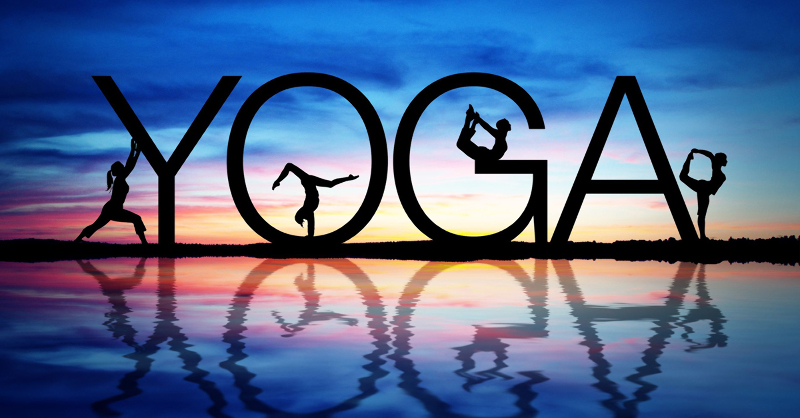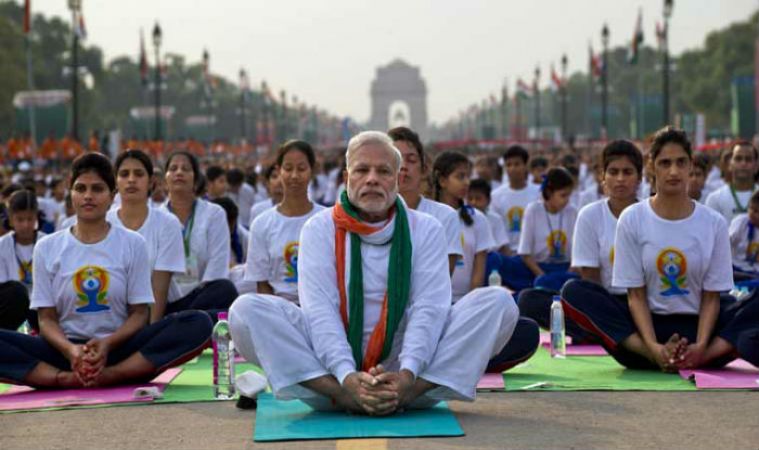Why is International Yoga Day Celebrated?
The idea of observing International Yoga Day was proposed by the Prime Minister of India, Narendra Modi, during his speech at the United Nations General Assembly in September 2014. Recognizing the universal appeal and holistic nature of yoga, Modi suggested that a dedicated day be established to highlight its significance and promote its practice worldwide. Subsequently, on December 11th, 2014, the United Nations General Assembly unanimously declared June 21st as International Yoga Day. The inaugural celebration took place on June 21, 2015.
International Yoga Day, celebrated on June 21st every year, is a global event that promotes the physical, mental, and spiritual benefits of practicing yoga. This day aims to raise awareness about the numerous advantages of incorporating yoga into one’s daily life and to encourage people around the world to embrace this ancient practice.
History of Yoga

Yoga, originating in ancient India, is an ancient discipline that combines physical postures, breathing exercises, meditation, and ethical principles to promote overall well-being. It offers a holistic approach to health, fostering harmony between the body, mind, and spirit. Through regular practice, individuals can experience improved flexibility, strength, balance, stress reduction, mental clarity, and emotional well-being.
Yoga is an ancient practice that has been passed down through generations, originating in the Indus Valley civilization around 3000 BCE. Its roots can be traced back to the ancient Indian scriptures known as the Vedas, which contain hymns, rituals, and philosophical teachings. The practice of yoga evolved over thousands of years, adapting to different cultures and contexts, and encompassing a wide range of techniques and philosophies.
The word “yoga” itself comes from the Sanskrit word “yuj,” which means to unite or join. It refers to the union of the body, mind, and spirit, and the connection between the individual self and the universal consciousness. Yoga aims to achieve harmony and balance by integrating physical postures (asanas), breath control (pranayama), meditation (dhyana), and ethical principles (yamas and niyamas).
In the ancient texts of the Upanishads and the Bhagavad Gita, yoga is described as a means to attain self-realization and liberation from the cycle of birth and death. It is seen as a spiritual path that leads to enlightenment and the realization of one’s true nature.
One of the earliest systematic presentations of yoga philosophy is found in Patanjali’s Yoga Sutras, composed around the 2nd century BCE. Patanjali outlined the eight limbs of yoga, known as Ashtanga, which provide a comprehensive framework for spiritual growth and self-discipline. These eight limbs include moral and ethical principles (yamas and niyamas), physical postures (asanas), breath control (pranayama), sense withdrawal (pratyahara), concentration (dharana), meditation (dhyana), and samadhi (a state of deep absorption and union with the divine).
Over the centuries, different schools and traditions of yoga emerged, each with its own emphasis and practices. Hatha Yoga, which focuses on physical postures and breath control, gained popularity in the 15th century with the publication of the Hatha Yoga Pradipika. This text provided detailed instructions on asanas, pranayama, and other practices to purify the body and prepare it for meditation.
Modern Yoga
In the late 19th and early 20th centuries, yoga started to gain recognition in the West as Indian gurus and teachers began to travel and spread the teachings of yoga. Swami Vivekananda, Paramahansa Yogananda, and B.K.S. Iyengar were among the influential figures who played a crucial role in introducing yoga to the Western world.
Today, yoga has become a global phenomenon, practiced by millions of people around the world. It is valued not only for its physical benefits but also for its ability to reduce stress, enhance mental clarity, and promote overall well-being. Various styles of yoga, such as Vinyasa, Ashtanga, Kundalini, and Yin Yoga, cater to different preferences and needs.
About International Yoga Day
International Yoga Day serves as an opportunity for individuals, communities, and organizations to come together and celebrate the immense benefits that yoga offers. It aims to raise awareness about the transformative power of yoga and its potential to positively impact people of all ages and backgrounds.
On this day, various events and activities are organized globally, including yoga sessions, workshops, seminars, and cultural performances. Yoga enthusiasts and practitioners gather in parks, public spaces, and community centers to participate in mass yoga sessions, led by experienced instructors. These events provide a platform for individuals to connect, learn, and deepen their understanding of yoga.
The celebration of International Yoga Day extends beyond physical fitness. It also highlights the importance of practicing yoga as a means to foster peace, harmony, and unity among individuals and communities worldwide. Yoga, with its emphasis on compassion, mindfulness, and self-awareness, can contribute to building a more peaceful and inclusive society.
Significance of International Yoga Day
The significance of International Yoga Day lies in its ability to unite people from diverse backgrounds under a common pursuit of health, well-being, and self-discovery. It transcends cultural, religious, and geographical boundaries, promoting harmony and understanding among individuals across the globe.
In conclusion, International Yoga Day is a global celebration that highlights the immense benefits of practicing yoga. It serves as a reminder of the importance of embracing this ancient discipline to enhance physical, mental, and spiritual well-being. By promoting yoga, this day encourages individuals to embark on a journey of self-discovery, inner peace, and holistic health.




 Weekly One Liners 15th to 21st of Decemb...
Weekly One Liners 15th to 21st of Decemb...
 World Basketball Day 2025 Celebrates Bas...
World Basketball Day 2025 Celebrates Bas...
 UN Celebrates Second World Meditation Da...
UN Celebrates Second World Meditation Da...







